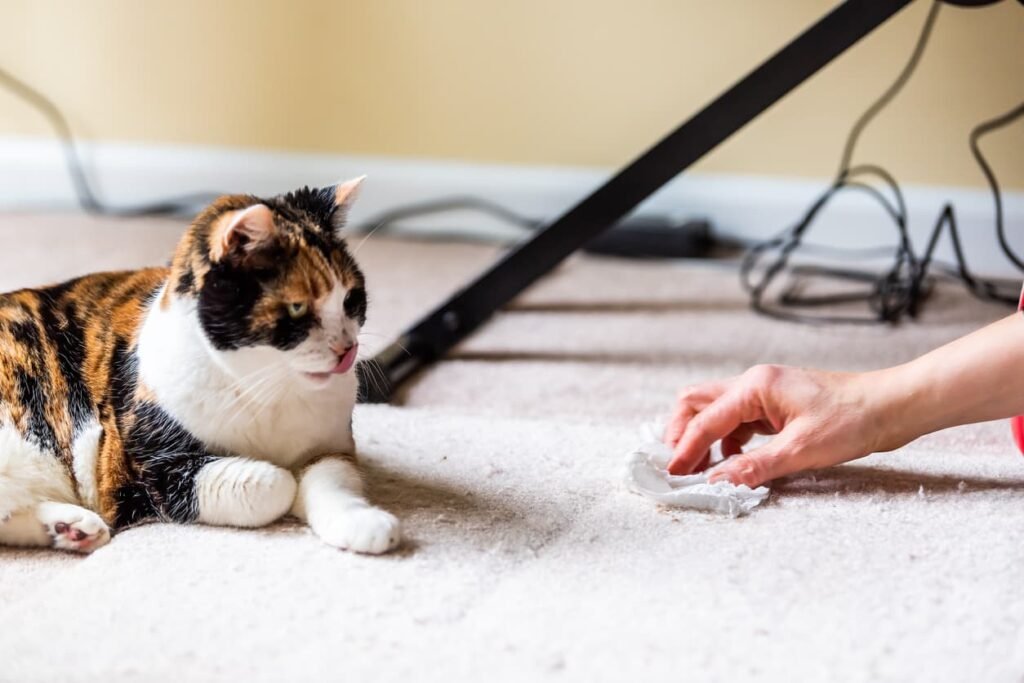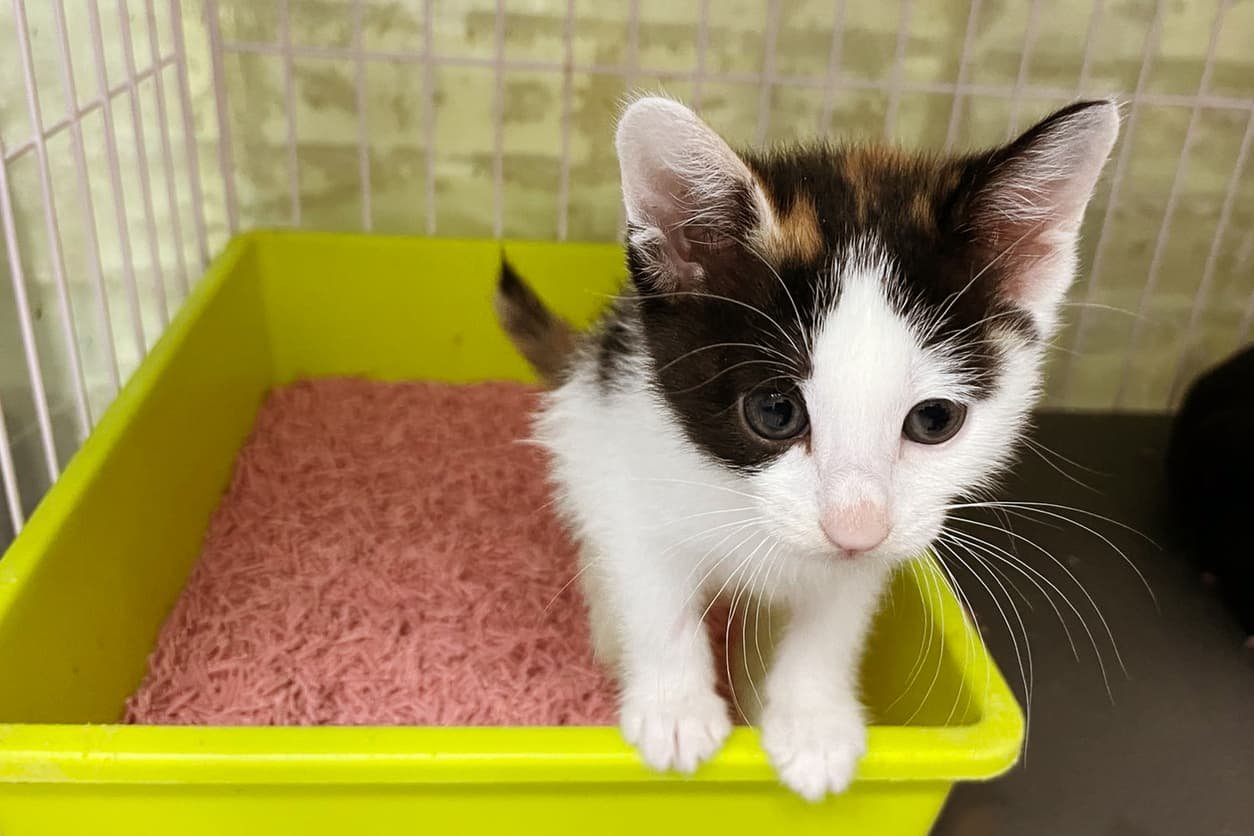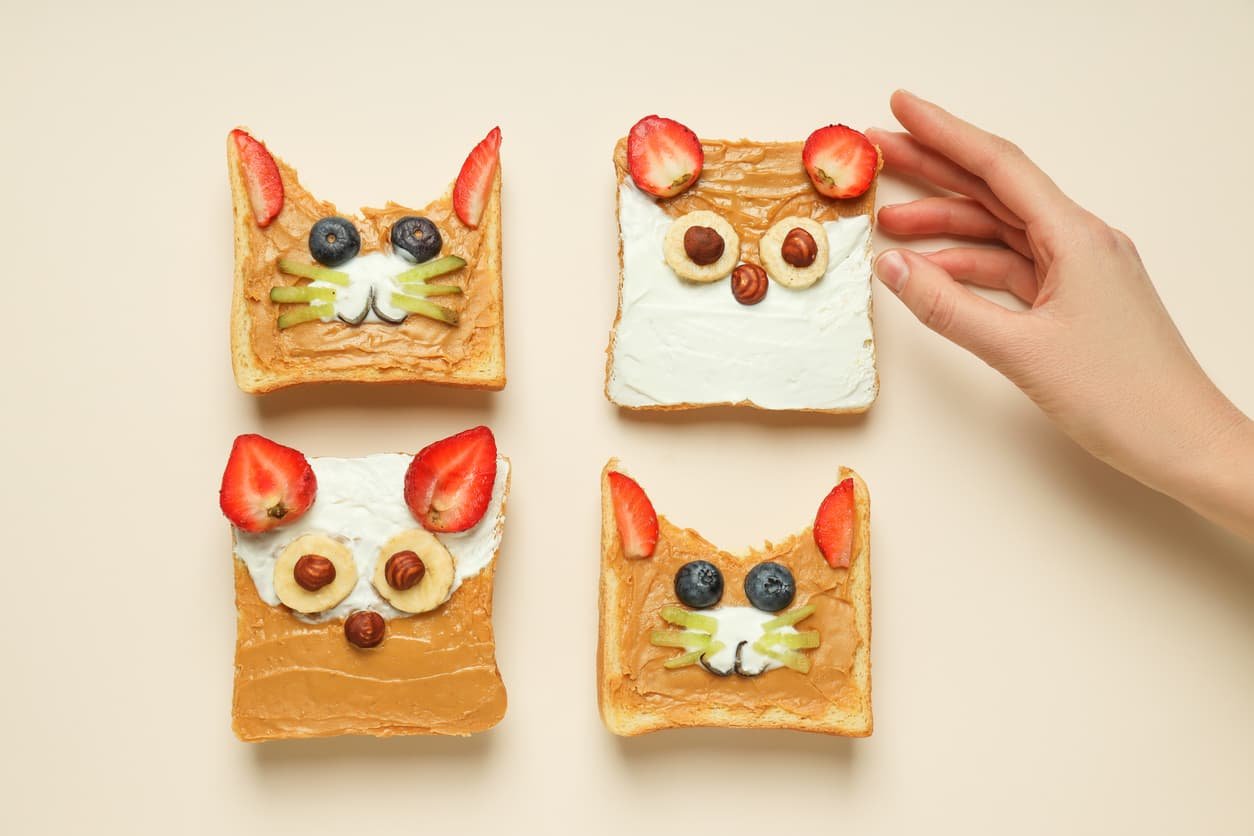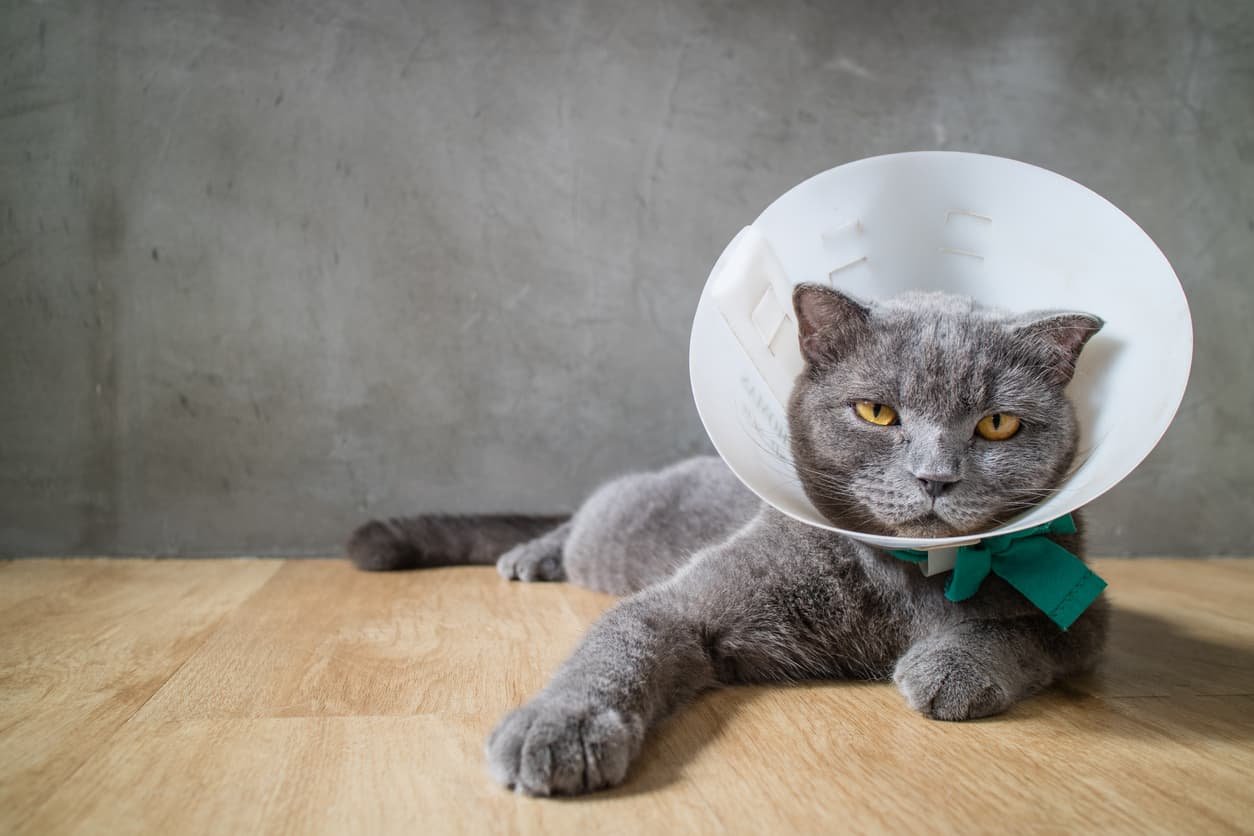Why Do Cats Vomit? This is a common concern among pet parents. While an occasional incident may not be a cause for concern, frequent vomiting can indicate an underlying problem. Understanding why cats vomit can help cat owners determine whether their feline friend needs medical attention. This article will explore the causes of vomiting in cats, the different types of vomiting, and how to help your pet feel better.
Table of Contents
ToggleWhy Do Cats Vomit? Common Causes Explained
There are various reasons why a cat vomits, ranging from minor digestive upset to serious health conditions. Understanding the common causes of cat vomiting is crucial for maintaining cat health. Some common causes include:
- Eating too quickly: Cats that eat too fast may regurgitate undigested food soon after a meal.
- Dietary indiscretion: Cats sometimes eat foreign material, such as string or plastic, which can upset their stomachs.
- Hairballs: Long-haired cats, in particular, often vomit wads of fur they cannot pass through their digestive system.
- Food allergies or intolerances: Some cats develop reactions to certain ingredients in their cat food, leading to a food allergy.
- Intestinal parasites: Internal parasites, such as worms, can cause vomiting and other digestive issues. Learn more about intestinal parasites in cats.
- Inflammatory bowel disease (IBD): This chronic condition affects a cat’s digestive tract and can lead to frequent vomiting. Read about IBD in cats.
- Intestinal blockages: A foreign object lodged in the intestines can cause severe vomiting and requires immediate medical intervention. Find out more about intestinal blockages.
- Organ problems: Issues with the liver, kidneys, or pancreas can trigger vomiting.
- Esophageal issues: Conditions affecting the esophagus can prevent food from reaching the stomach properly, leading to vomiting.
- Serious medical conditions: Some cancers and infections can cause a cat to vomit frequently.
- Indication of poisoning: If a cat is exposed to toxic substances such as household cleaners, certain plants, or human medications, vomiting can be an early sign of poisoning. Check for toxic substances harmful to cats.
Is My Cat Vomiting? Types of Cat Vomit and What It Means
If you’re asking “is my cat vomiting?”, it’s essential to distinguish between vomiting and regurgitation. Vomiting involves active retching, while regurgitation is passive and happens quickly after eating.
Types of Cat Vomit
Understanding the types of cat vomit can help determine the cause:
- Yellow or foamy vomit: Often caused by bile when a cat vomits on an empty stomach.
- Undigested food vomit: May indicate eating too fast or food intolerance.
- Watery vomit: Can be linked to nausea, internal parasites, or kidney disease.
- Blood in vomit (red or brown): A serious condition requiring emergency vet care.
- Mucus in vomit: Can indicate an irritated stomach or esophageal problem.
Cat Vomiting: When to Worry
Many cat owners wonder, “cat vomiting, when to worry?” Occasional vomiting may not be alarming, but frequent or severe vomiting could indicate an underlying issue. Understanding why do cats vomit can help determine the seriousness of the condition. Seek veterinary care if:
Your cat vomits multiple times a day.
Vomiting is accompanied by diarrhea or lethargy.
There is blood in the vomit.
Your cat stops eating or drinking.
The vomiting persists for more than 24 hours.
If you notice alarming symptoms, why do cats vomit becomes more than just a question—cat vomiting when to worry is a serious consideration, and seeking medical attention is crucial. Find an emergency vet near you.
Cat Vomit Color Chart: What the Colors Mean
| Vomit Color | Possible Meaning |
|---|---|
| Yellow or Green | Bile, possibly from an empty stomach |
| Brown | Partially digested food or internal bleeding |
| Red | Fresh blood; possible gastric ulcer or poisoning |
| White Foamy | Often caused by stomach acid buildup |
| Black | Could indicate digested blood from internal bleeding |
Additional Considerations for Longhair Cats
Longhair cats are particularly prone to vomiting due to hairballs. Regular grooming and providing hairball control cat food can help reduce this problem. Cat parents should also consider feeding specialized diets that promote better digestion and reduce the likelihood of hairball formation. Explore hairball remedies for cats.
Maintaining a health cat starts with understanding their digestive signals. When you ask yourself, “Why do cats vomit?”, it’s essential to evaluate both their diet and environment. Regular grooming, slow-feeder bowls, and a high-quality diet tailored to your cat’s age and needs can significantly reduce vomiting episodes. According to Cornell Feline Health Center, frequent vomiting can sometimes signal chronic illness, and proactive care plays a vital role in preventing serious complications. Always monitor your pet’s habits—because answering why do cats vomit early on can help ensure a long, healthy life.
Conclusion
Understanding why do cats vomit is essential for maintaining a cat’s health. While occasional vomiting may not be a cause for concern, chronic or severe vomiting requires veterinary attention. Pet owners should monitor their cat’s diet, ensure proper hydration, and seek medical help if vomiting persists. By identifying the cause and making dietary or medical adjustments, cat parents can help their feline companions live healthier lives.
FAQ
When should I be concerned about my cat throwing up?
You should be concerned if your cat vomits multiple times a day, vomits blood, shows signs of lethargy, stops eating, or if vomiting persists for more than 24 hours. Chronic vomiting may indicate a more serious health issue, and a veterinary checkup is recommended.
What should I give my cat if he is vomiting?
If your cat vomits once but appears fine, you can offer a small amount of water or ice cubes to prevent dehydration. After a few hours, try feeding bland food such as boiled chicken or turkey in small portions. If vomiting continues, consult your veterinarian for treatment options.
How much is normal for a cat to throw up?
Occasional vomiting, such as once a month, may not be a concern. However, if your cat vomits more frequently—multiple times per week or daily—it may indicate an underlying condition such as food intolerance, hairballs, or a digestive issue that needs veterinary attention.
Why is my cat throwing up undigested food but acting normal?
If your cat is throwing up undigested food but otherwise acting normal, it may be due to eating too quickly, a mild food intolerance, or hairballs. Try feeding smaller, more frequent meals or using a slow-feeder bowl. If vomiting persists, consult a veterinarian to rule out an underlying issue.
What does the color of cat vomit mean?
The color of cat vomit can indicate different issues: Yellow/green: Bile, often from an empty stomach. White foam: Gastric irritation. Brown/red: Possible blood—seek vet care. Undigested food: May suggest eating too fast or intolerance.
How to stop my cat from vomiting hairballs?
Brush your cat regularly to reduce loose fur, feed hairball-control food or treats, and ensure proper hydration. Adding a bit of fiber (like pumpkin) to their diet can also help pass hair naturally through digestion.








